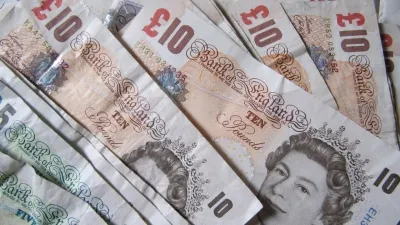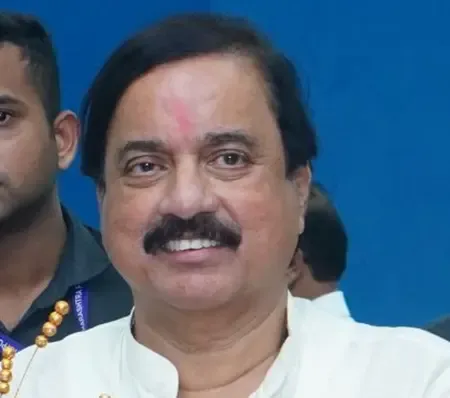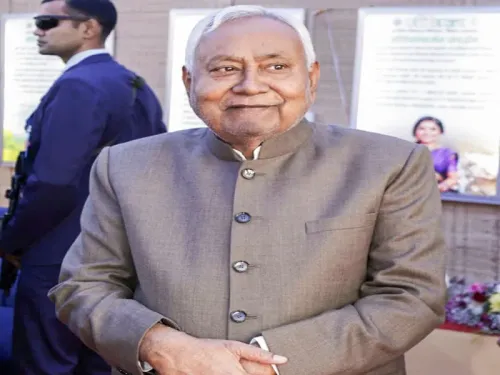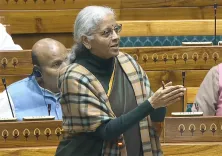Will the India-UK FTA Unleash £25.5 Billion in Trade?

Synopsis
Key Takeaways
- 99% of Indian goods to the UK and 90% of UK goods to India will be tariff-free.
- The UK's whisky tariff will reduce from 150% to 40% over ten years.
- Significant liberalization in 36 service sectors is included.
- Reciprocal DCC to simplify social security contributions for workers.
- Potential for growth in textiles, IT, and green technology.
Mumbai, June 13 (NationPress) The India-UK Free Trade Agreement, aimed at eliminating tariffs on 99% of Indian exports to the UK and 90% of UK exports to India, is projected to generate an additional trade value of £25.5 billion, as stated by UK Trade Commissioner for South Asia Harjinder Kang.
During a panel discussion, he mentioned, "This agreement transcends a conventional trade deal; it serves as a roadmap for the next phase of economic collaboration between the UK and India. With existing trade valued at £43 billion and an incremental potential of £25.5 billion, it paves the way for significant advantages for both manufacturers and service providers."
Kang, who also holds the position of Deputy High Commissioner for Western India, outlined the forthcoming steps: legal review, Prime Ministerial endorsement, parliamentary approval (anticipated in 9–12 months), and phased implementation. He emphasized that the agreement encompasses services liberalization, auto tariffs (with quotas), and the establishment of a "future-ready tech-security corridor", with prospects for expansion into industries such as pharmaceuticals, semiconductors, and green technology.
He elaborated that under the India-UK FTA, 99% of Indian products heading to the UK and 90% of UK products heading to India will be exempt from tariffs.
The UK's top tariff on whisky will decrease from 150% to 40% over a decade. The Carbon Border Adjustment Mechanism (CBAM) is not included in the India-UK FTA, reassuring Indian industries that carbon taxes will not influence trade conditions established by this agreement, he clarified.
Furthermore, there will be considerable liberalization in services under the FTA, covering 36 sectors under Contractual Service Suppliers and 16 sectors under Independent Professionals, encompassing fields like IT, research and development, culinary arts, yoga instruction, and music.
In conjunction with the FTA, the UK and India have agreed to negotiate a reciprocal Digital Commerce Agreement (DCC), ensuring that employees temporarily working in the other nation for up to three years will continue to contribute to social security only in their home country, Kang added.
As noted by Amisha Vora, Chairperson & MD of PL Capital, 72% of India’s exports to the UK—which include electronics, fuels, chemicals, textiles, and apparel—show a trade surplus, positioning sectors like auto components, engineering goods, and textiles for significant growth.
Highlighting the services aspect of the FTA during the panel, she pointed out India's $18 billion in services exports to the UK, which is the second-largest after the US, and emphasized the enhanced mobility for Indian IT, creative, and professional talent as a strong element for soft power and services export enhancement.
From a broader perspective, she characterized the deal as illustrating two key shifts: Britain's post-Brexit strategy to diversify away from China towards democratic markets, and India's endeavor to integrate further into rules-based, like-minded economies without compromising regulatory sovereignty.
Anuj Agarwal, chief economist at Welspun Group, highlighted the textiles sector's potential: "This sector represents 2.3% of India’s GDP, 12–13% of industrial output, and employs 45 million individuals. However, our exports to the UK stand at only $1.5 billion, lagging behind Bangladesh and Vietnam. This FTA provides India with a valid opportunity to regain its market share. The timeline for tariff reductions will influence the pace of investment responses; however, if the reductions are prolonged, the industry's enthusiasm may diminish."










